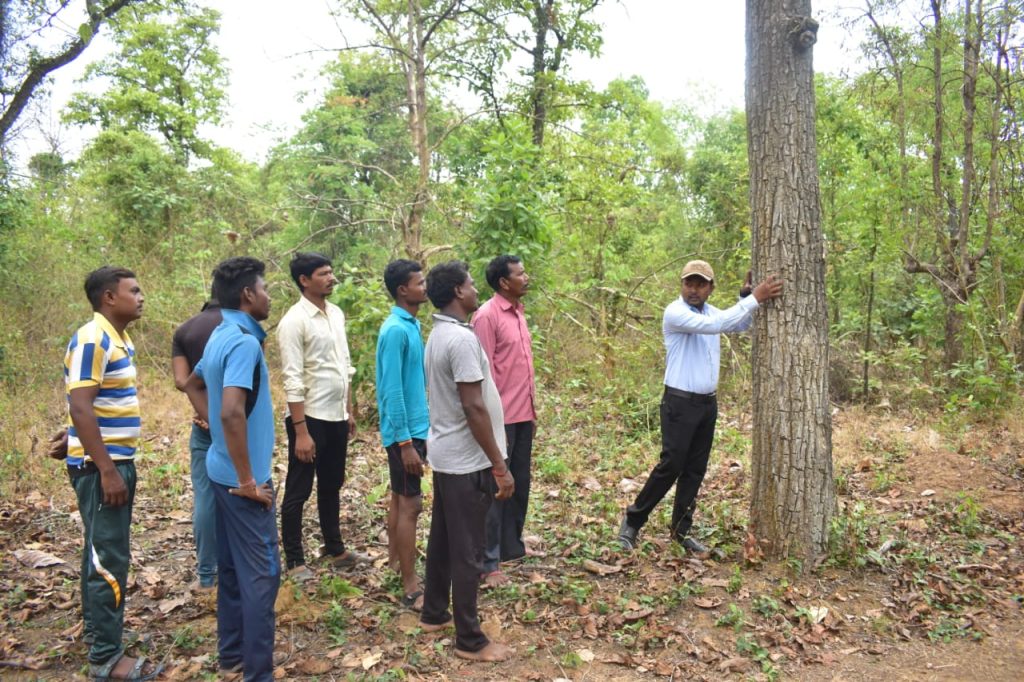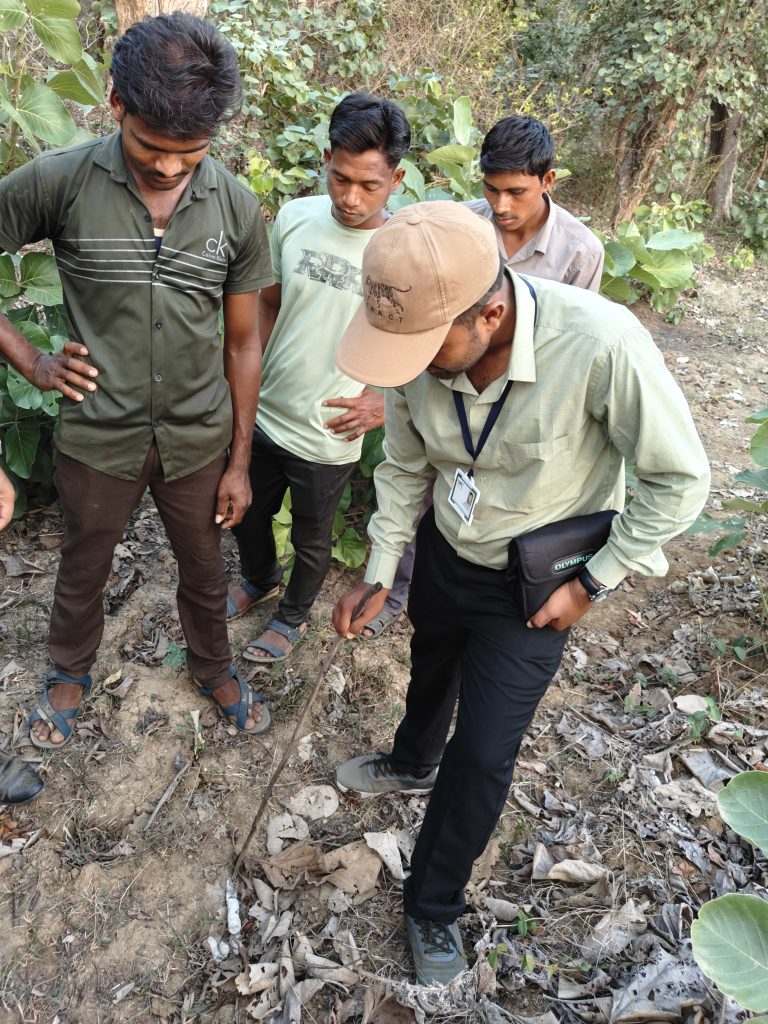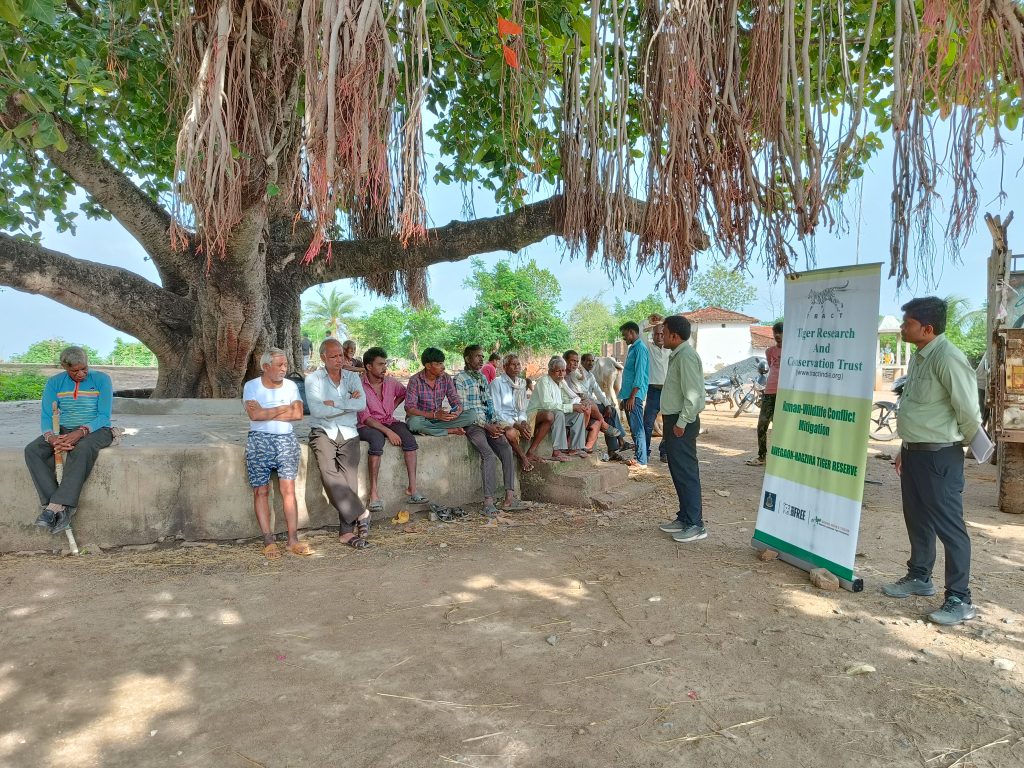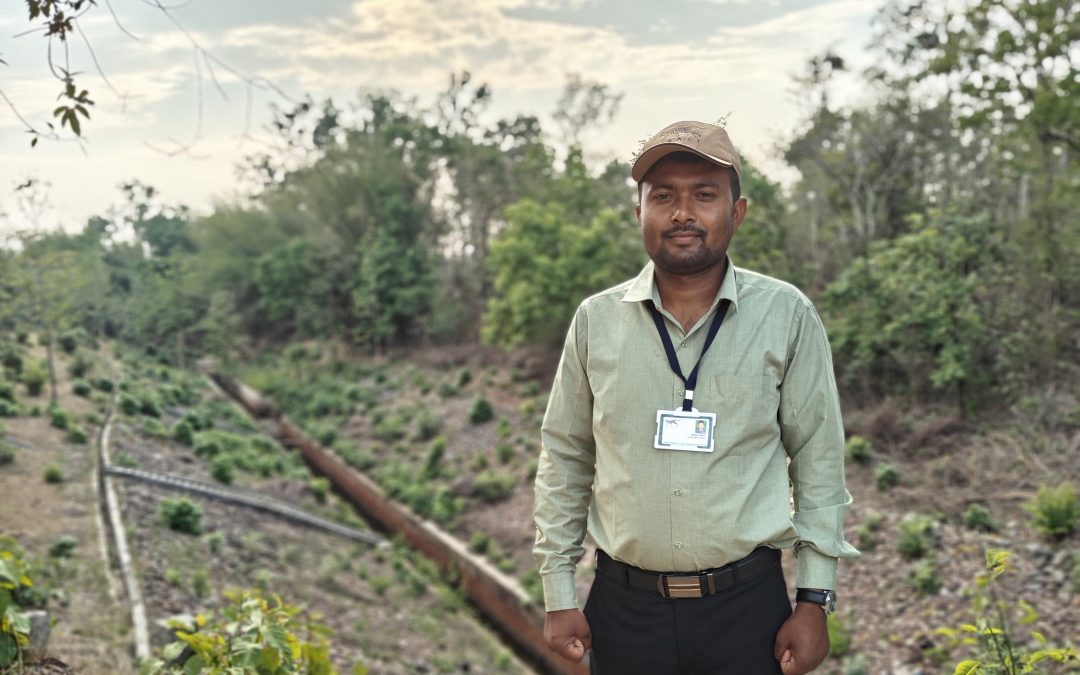Hivraj Raut, conservation officer at SLTP partner Tiger Research and Conservation Trust (TRACT) speaks to us about the team’s Tiger Ambassadors programme.
A local from Nawegaon Nagzhira Tiger Reserve, Hivraj has been working with TRACT for over 4 years now, spearheading the on ground implementation of the Tiger Ambassadors programme. He sheds light on the importance of delivering regular awareness programmes and fostering conservation leadership within the local community for human-wildlife conflict reduction.
I have been working with Tiger Research and Conservation Trust (TRACT) as a conservation officer for over 4 years in the Pench and Nawegaon Nagzhira Tiger Reserve region. Initially we were working in the Pench Tiger Reserve corridor with local communities and in 2022, we started our work in Nawegaon Nagzhira on the ‘Tiger Ambassadors’ project.
As a part of this project, we are working on the mitigation of human-wildlife conflict through awareness programmes in the buffer villages of the reserve. We have also selected and trained a team of 7 volunteers per village as Tiger Ambassadors (On the lines of Primary Response Teams) for better human-wildlife conflict mitigation.

Hivraj during a Tiger Ambassador field training session
These teams help in mob control and sharing information with the forest department whenever there is movement of large carnivores near the village to ensure no conflict incident occurs and that the wild animal is rescued if necessary. These teams are as important at the village level as other teams and committees like the Eco-Development committee (VEDC) and Joint Forest Management (JFM) committees.

Hivraj with some Tiger Ambassadors during a patrol
Secondly, we notice that though the local community has traditional knowledge about forests, technical knowledge on wildlife identification, and behaviour is currently missing, especially among the younger generation. For this we are undertake awareness sessions in villages and speak to the community about the food chain, animal behaviour, and suggest ways to mitigate conflict when an individual crosses paths with a wild animal. This is very essential if we want to reduce human-wildlife conflict in the future, and we can only conserve forests and wildlife if we reduce conflict.

Hivraj delivering an awareness session for the local community
To read more about Hivraj’s background and conservation journey: Click Here

